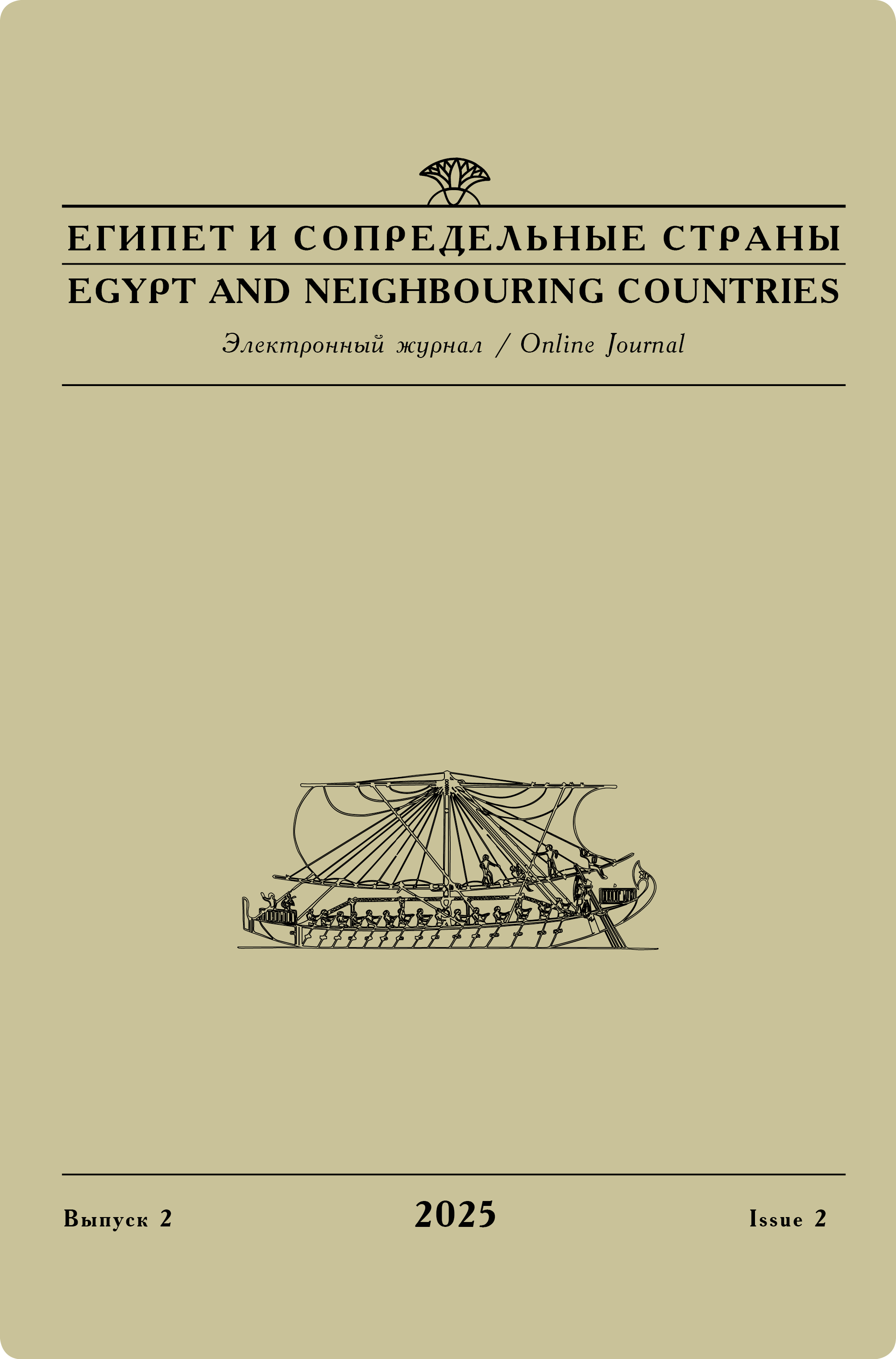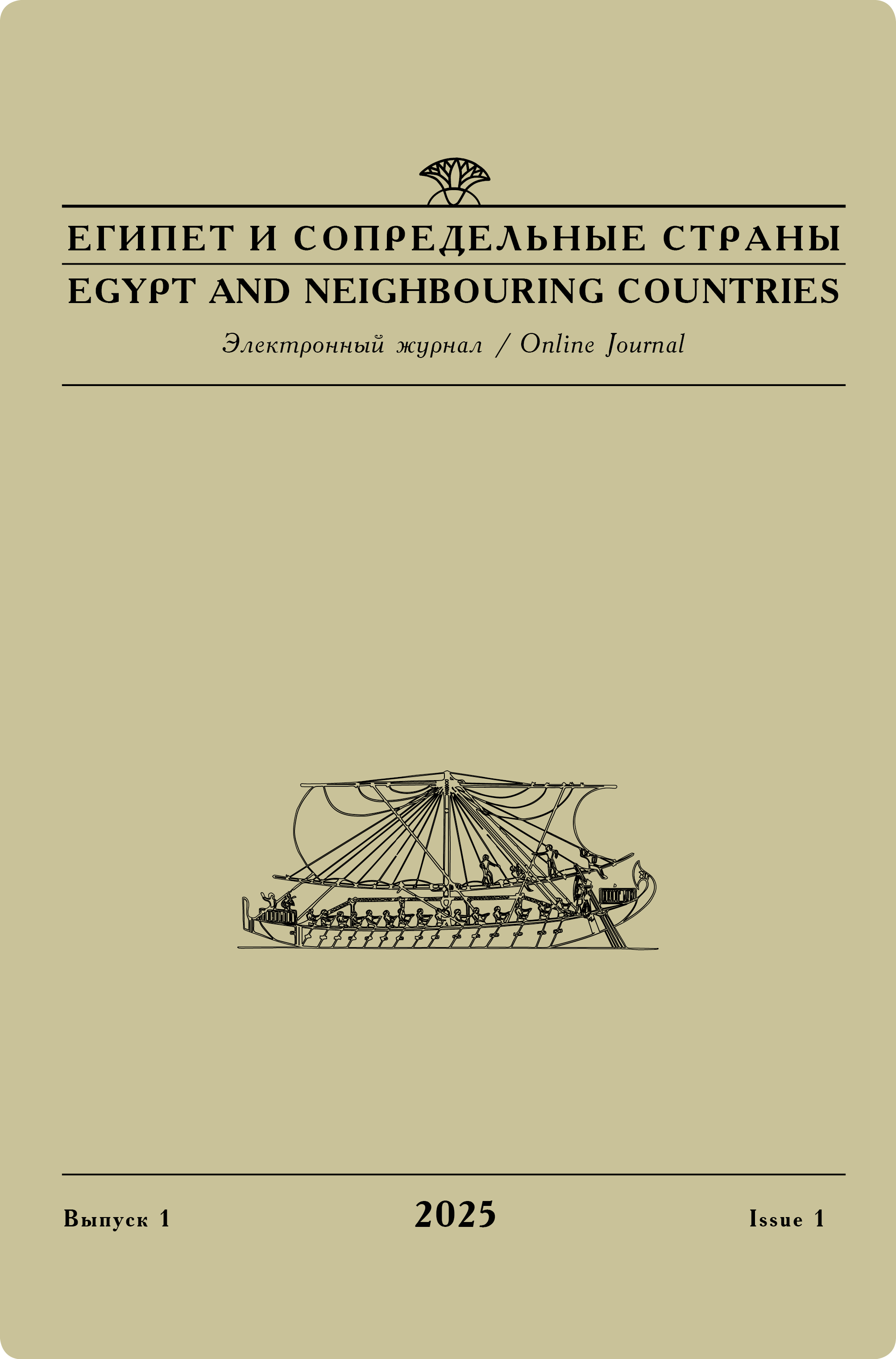Issue 4, 2019
S. V. Ivanov
The granite sarcophagus of Tjay
The sarcophagus of Tjay, a royal scribe of correspondence of the Lord of the Two Lands, was discovered in 1905 by R. Mond in the burial chamber of TT 23. Since then this object did not attract scholarly attention. Due to the fact that the corpus of private sarcophagi of the New Kingdom is still to be compiled, it seems important to provide some details on this object.
The sarcophagus if Tjay is mummiform, its lid represents the deceased as a mummy with exposed face and hands. The sarcophagus is hewn out of pink granite. Its length is app. 267 cm, which corresponds to the ‘large’ size of the New Kingdom anthropomorphic sarcophagi. It is possible that it was made by two groups of stoneworkers — gangs of the right and the left hands. Defects of stone and faults of workers were fixed with clay. The shape of the coffin is irregular: outlines and dimensions of the chest and lid do not match.
Outer surface of the sarcophagus is decorated with painted reliefs. The main subjects of these reliefs are guarding the deceased, who is identified with Osiris, by the goddesses Isis and Nephthys, and vignettes and the text of the ‘Spell 161’ of the ‘Book of the Dead’. The closest parallels to the sarcophagus of Tjay are granite sarcophagi of Amenhotep Huy from Mit-Rahina, Amenempope and Djhutimes from Thebes (TT 41 and TT 32).
A relatively small number of inscriptions and mentioning of the owner’s name only twice are among peculiarities of Tjay’s sarcophagus. This can be a sign of speedy production or adaptation of a sarcophagus that was made for sale.
Keywords:
mummiform sarcophagus, anthropoid coffin, tomb of Tjay, TT 23, Theban necropolis, funerary art of the Ramesside period, stoneworking, burial customs, ‘Book of the Dead’.
Original language — English.
DOI: 10.24411/2686-9276-2019-00010.
Referring: Ivanov S. V. The granite sarcophagus of Tjay // Egypt and neighbouring countries 4 (2019): 1–14. DOI: 10.24411/2686-9276-2019-00010.
Read full article




